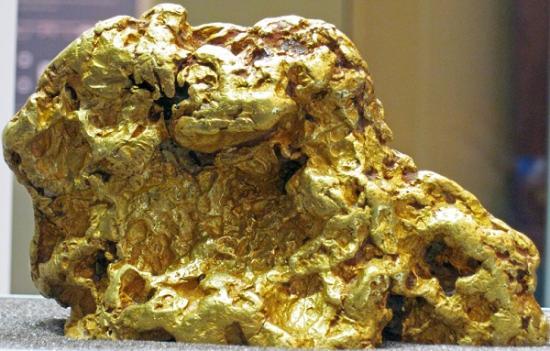Gold Price Soaring With Fears Over Coronavirus Crisis
28th July 2020

The stories in the news about soaring Gold prices are everywhere.
The Gurdian
Gold price hits record high amid fears over coronavirus crisis
Forbes
A Booming gold price will have consequences
livemint
Why some analysts don't expect gold price rally to end soon
PHOTO
Gold nugget from Australia. (public display, Field Museum of Natural History, Chicago, Illinois, USA) - https://www.flickr.com/photos/jsjgeology/16848647509/
A mineral is a naturally-occurring, solid, inorganic, crystalline substrance having a fairly definite chemical composition and having fairly definite physical properties. At its simplest, a mineral is a naturally-occurring solid chemical. Currently, there are over 5500 named and described minerals - about 200 of them are common and about 20 of them are very common. Mineral classification is based on anion chemistry. Major categories of minerals are: elements, sulfides, oxides, halides, carbonates, sulfates, phosphates, and silicates.
Elements are fundamental substances of matter - matter that is composed of the same types of atoms. At present, 118 elements are known (four of them are still unnamed). Of these, 98 occur naturally on Earth (hydrogen to californium). Most of these occur in rocks & minerals, although some occur in very small, trace amounts. Only some elements occur in their native elemental state as minerals.
To find a native element in nature, it must be relatively non-reactive and there must be some concentration process. Metallic, semimetallic (metalloid), and nonmetallic elements are known in their native state as minerals.
Gold (Au) is the most prestigious metal known, but it's not the most valuable. Gold is the only metal that has a deep, rich, metallic yellow color. Almost all other metals are silvery-colored. Gold is very rare in crustal rocks - it averages about 5 ppb (parts per billion). Where gold has been concentrated, it occurs as wires, dendritic crystals, twisted sheets, octahedral crystals, and variably-shaped nuggets. It most commonly occurs in hydrothermal quartz veins, disseminated in some contact- & hydrothermal-metamorphic rocks, and in placer deposits. Placers are concentrations of heavy minerals in stream gravels or in cracks on bedrock-floored streams. Gold has a high specific gravity (about 19), so it easily accumulates in placer deposits. Its high density allows prospectors to readily collect placer gold by panning.
In addition to its high density, gold has a high melting point (over 1000º C). Gold is also relatively soft - about 2.5 to 3 on the Mohs Hardness Scale. The use of pure gold or high-purity gold in jewelry is not desirable as it easily gets scratched. The addition of other metals to gold to increase the hardness also alters the unique color of gold. Gold jewelry made & sold in America doesn't have the gorgeous rich color of high-purity gold.
The Australian rock shown above is a large, nearly four pound mass of gold. The irregularly-distributed, smoothly sculpted surfaces indicate that this is likely a fluvial gold cobble - in other words, it appears to be from a placer deposit. - Author James St John
